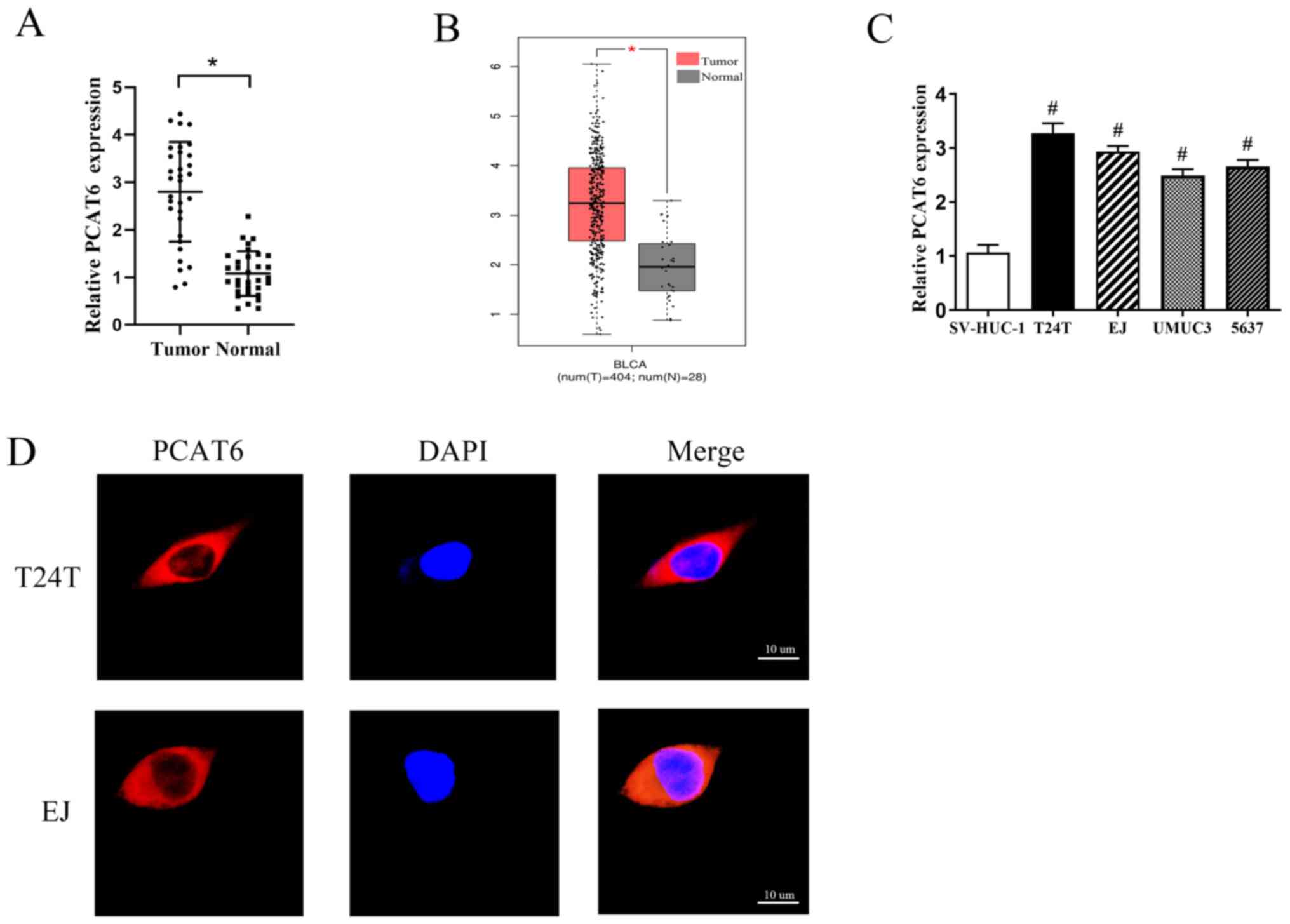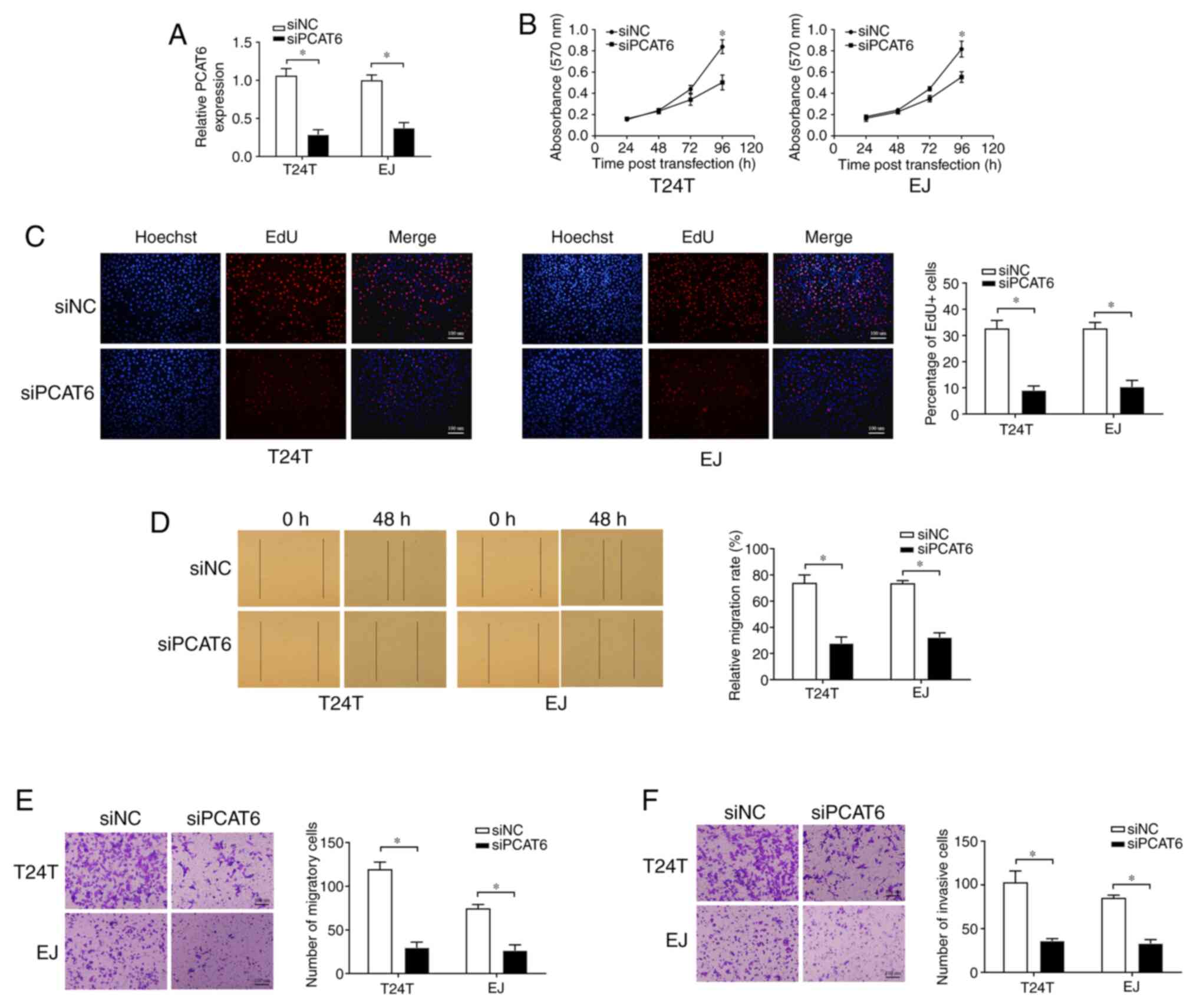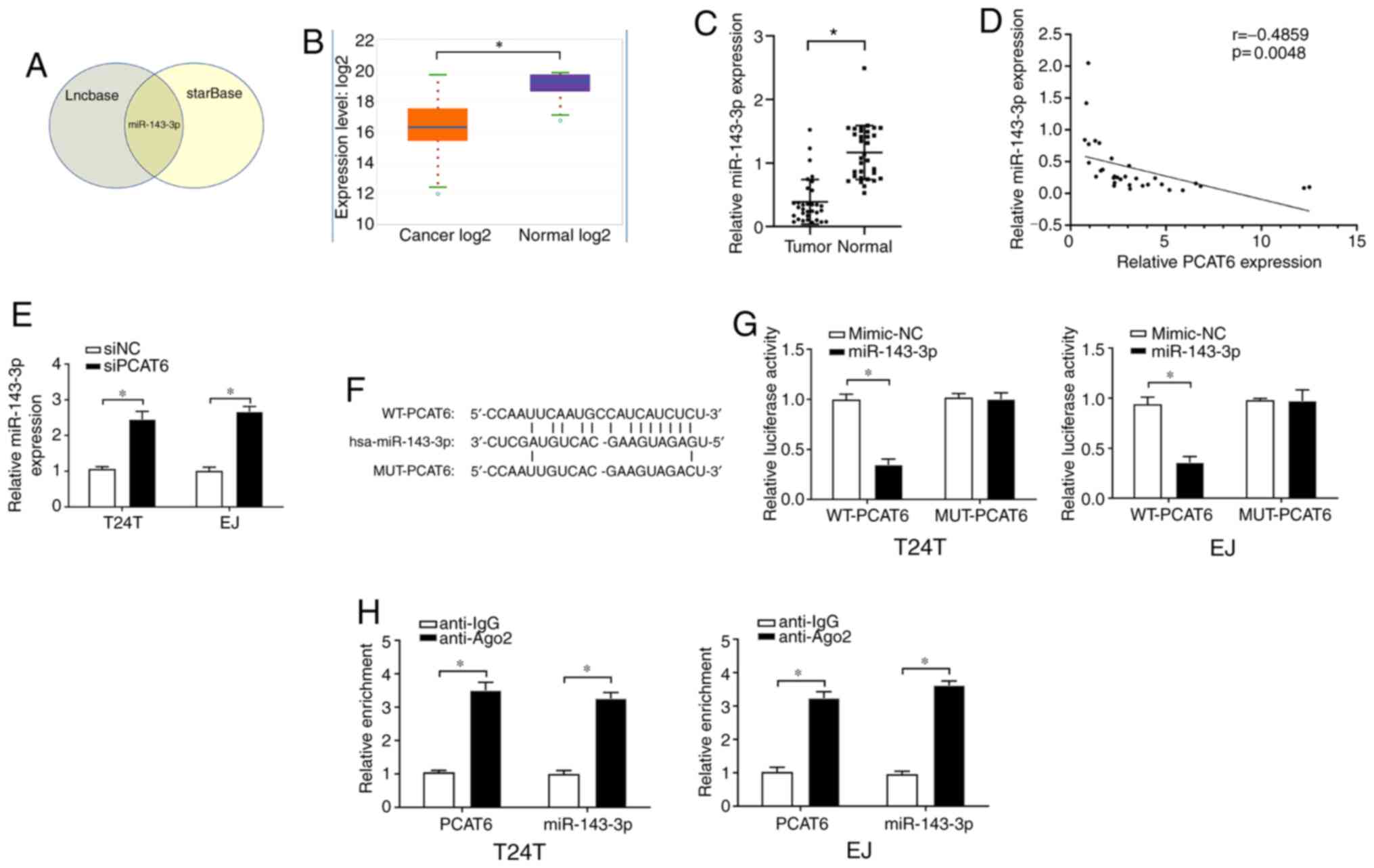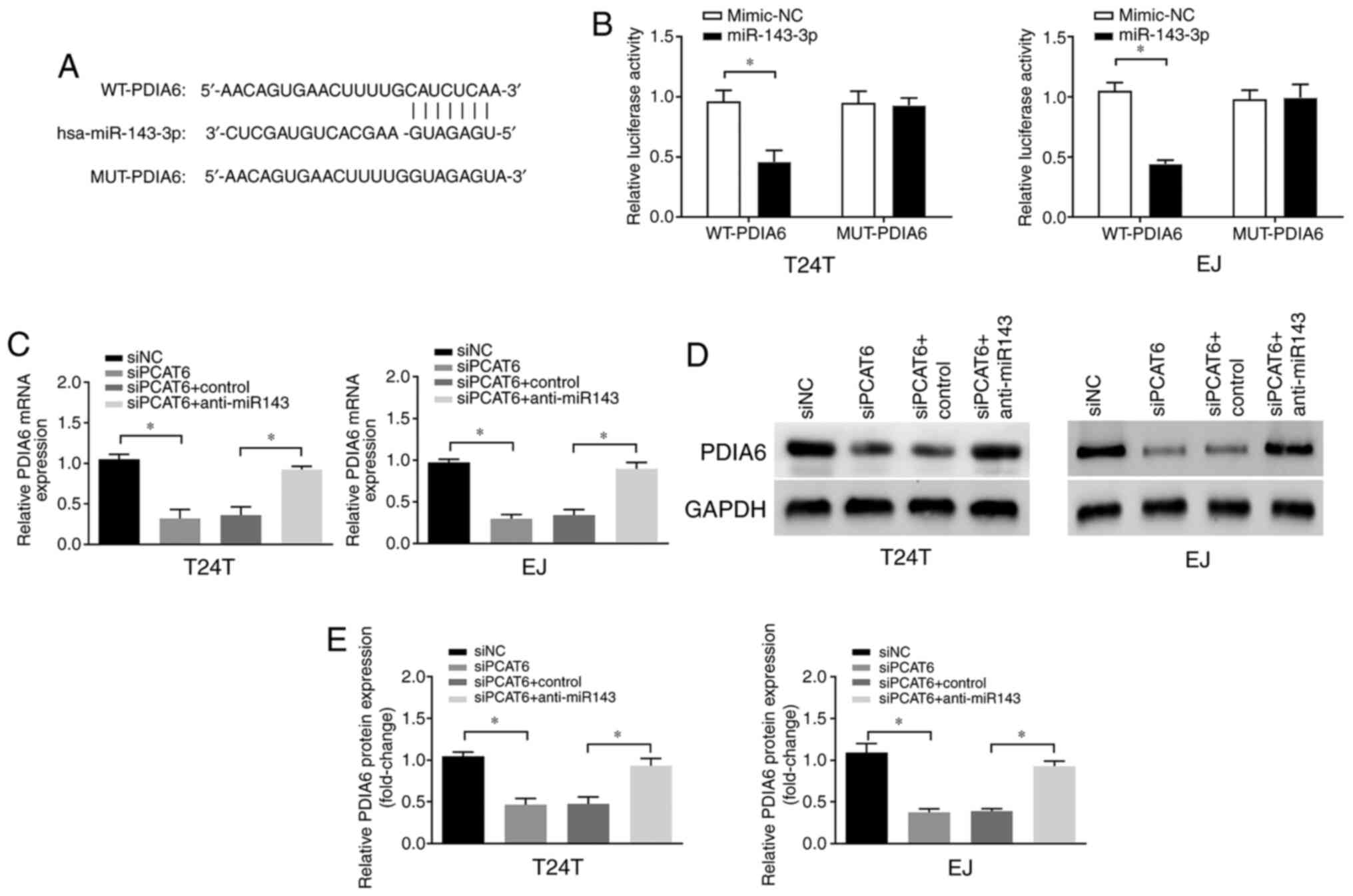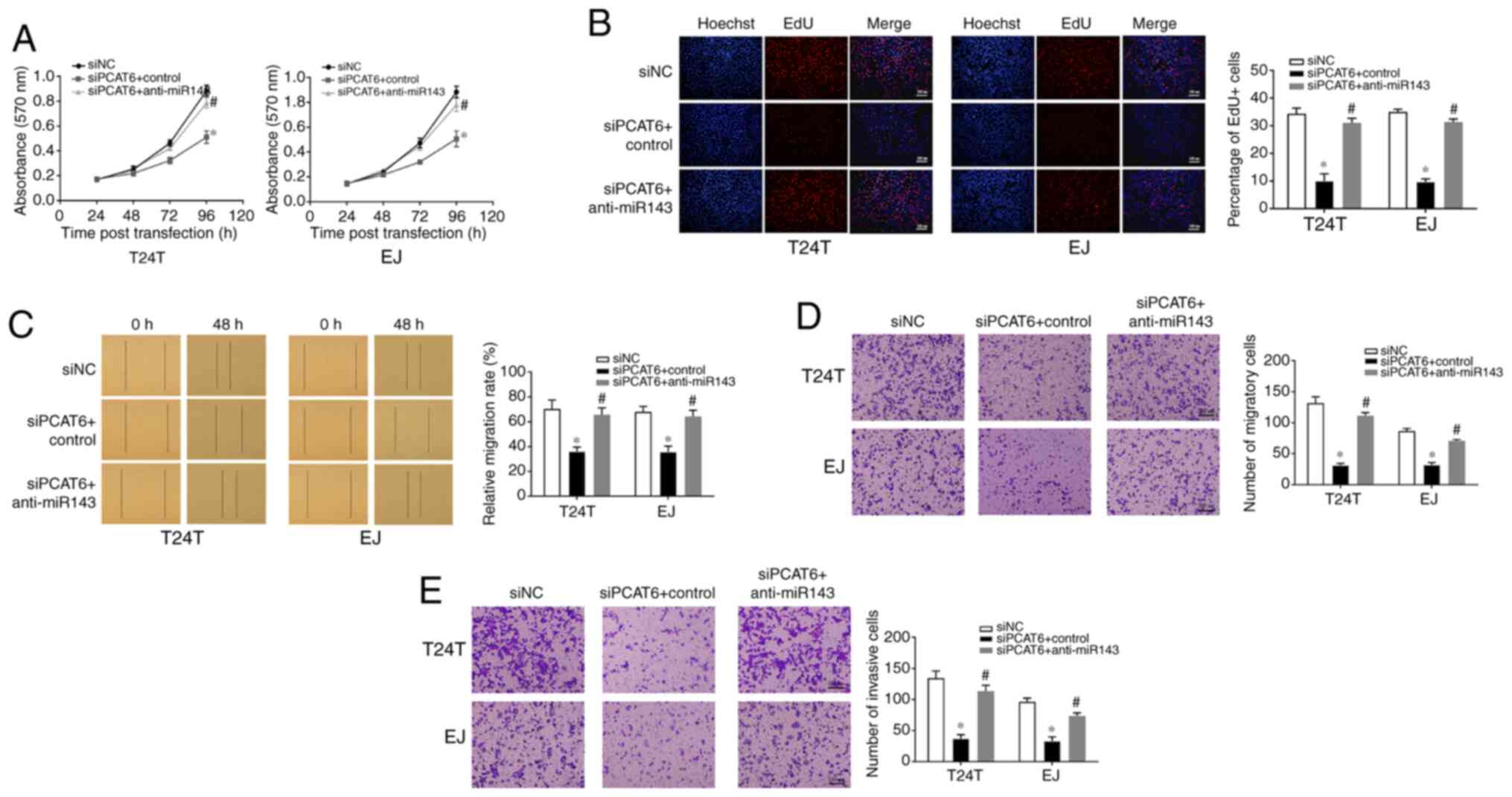|
1
|
Siegel RL, Miller KD and Jemal A: Cancer
statistics, 2019. CA Cancer J Clin. 69:7–34. 2019.PubMed/NCBI View Article : Google Scholar
|
|
2
|
Dettlaff K, Stawny M, Ogrodowczyk M,
Jelińska A, Bednarski W, Wątróbska-Świetlikowska D, Keck RW, Khan
OA, Mostafa IH and Jankun J: Formulation and characterization of
EGCG for the treatment of superficial bladder cancer. Int J Mol
Med. 40:329–336. 2017.PubMed/NCBI View Article : Google Scholar
|
|
3
|
Babjuk M, Bohle A, Burger M, Capoun O,
Cohen D, Compérat EM, Hernández V, Kaasinen E, Palou J, Rouprêt M,
et al: EAU guidelines on non-muscle-invasive urothelial carcinoma
of the bladder: Update 2016. Eur Urol. 71:447–461. 2017.PubMed/NCBI View Article : Google Scholar
|
|
4
|
Clark PE, Spiess PE, Agarwal N, Bangs R,
Boorjian SA, Buyyounouski MK, Efstathiou JA, Flaig TW, Friedlander
T, Greenberg RE, et al: NCCN guidelines insights: Bladder cancer,
version 2.2016. J Natl Compr Canc Netw. 14:1213–1224.
2016.PubMed/NCBI View Article : Google Scholar
|
|
5
|
Mohammed AA, El-Tanni H, El-Khatib HM,
Mirza AA, Mirza AA and Alturaifi TH: Urinary bladder cancer:
Biomarkers and target therapy, new era for more attention. Oncol
Rev. 10(320)2016.PubMed/NCBI View Article : Google Scholar
|
|
6
|
Babjuk M: Bladder cancer in the elderly.
Eur Urol. 73:51–52. 2018.PubMed/NCBI View Article : Google Scholar
|
|
7
|
Batista PJ and Chang HY: Long noncoding
RNAs: Cellular address codes in development and disease. Cell.
152:1298–1307. 2013.PubMed/NCBI View Article : Google Scholar
|
|
8
|
Isin M and Dalay N: LncRNAs and neoplasia.
Clin Chim Acta. 444:280–288. 2015.PubMed/NCBI View Article : Google Scholar
|
|
9
|
Wang M, Guo C, Wang L, Luo G, Huang C, Li
Y, Liu D, Zeng F, Jiang G and Xiao X: Long noncoding RNA GAS5
promotes bladder cancer cells apoptosis through inhibiting EZH2
transcription. Cell Death Dis. 9(238)2018.PubMed/NCBI View Article : Google Scholar
|
|
10
|
Liu D, Li Y, Luo G, Xiao X, Tao D, Wu X,
Wang M, Huang C, Wang L, Zeng F and Jiang G: LncRNA SPRY4-IT1
sponges miR-101-3p to promote proliferation and metastasis of
bladder cancer cells through up-regulating EZH2. Cancer Lett.
388:281–291. 2017.PubMed/NCBI View Article : Google Scholar
|
|
11
|
Orom UA, Derrien T, Beringer M, Gumireddy
K, Gardini A, Bussotti G, Lai F, Zytnicki M, Notredame C, Huang Q,
et al: Long noncoding RNAs with enhancer-like function in human
cells. Cell. 143:46–58. 2010.PubMed/NCBI View Article : Google Scholar
|
|
12
|
Shi R, Wu P, Liu M, Chen B and Cong L:
Knockdown of lncRNA PCAT6 Enhances radiosensitivity in
triple-negative breast cancer cells by regulating miR-185-5p/TPD52
axis. Onco Targets Ther. 13:3025–3037. 2020.PubMed/NCBI View Article : Google Scholar
|
|
13
|
Dong D, Lun Y, Sun B, Sun H, Wang Q, Yuan
G and Quan J: Silencing of long non-coding RNA PCAT6 restrains
gastric cancer cell proliferation and epithelial-mesenchymal
transition by targeting microRNA-15a. Gen Physiol Biophys. 39:1–12.
2020.PubMed/NCBI View Article : Google Scholar
|
|
14
|
Ma Z, Gu G, Pan W and Chen X: LncRNA PCAT6
accelerates the progression and chemoresistance of cervical cancer
through up-regulating ZEB1 by sponging miR-543. Onco Targets Ther.
13:1159–1170. 2020.PubMed/NCBI View Article : Google Scholar
|
|
15
|
Miyamoto H, Miller JS, Fajardo DA, Lee TK,
Netto GJ and Epstein JI: Non-invasive papillary urothelial
neoplasms: The 2004 WHO/ISUP classification system. Pathol Int.
60:1–8. 2010.PubMed/NCBI View Article : Google Scholar
|
|
16
|
Tang Z, Li C, Kang B, Gao G, Li C and
Zhang Z: GEPIA: A web server for cancer and normal gene expression
profiling and interactive analyses. Nucleic Acids Res. 45:W98–W102.
2017.PubMed/NCBI View Article : Google Scholar
|
|
17
|
Zheng F, Wang M, Li Y, Huang C, Tao D, Xie
F, Zhang H, Sun J, Zhang C, Gu C, et al: CircNR3C1 inhibits
proliferation of bladder cancer cells by sponging miR-27a-3p and
downregulating cyclin D1 expression. Cancer Lett. 460:139–151.
2019.PubMed/NCBI View Article : Google Scholar
|
|
18
|
Liu F, Zhang H, Xie F, Tao D, Xiao X,
Huang C, Wang M, Gu C, Zhang X and Jiang G: Hsa_circ_0001361
promotes bladder cancer invasion and metastasis through
miR-491-5p/MMP9 axis. Oncogene. 39:1696–1709. 2020.PubMed/NCBI View Article : Google Scholar
|
|
19
|
Li Y, Zheng F, Xiao X, Xie F, Tao D, Huang
C, Liu D, Wang M, Wang L, Zeng F and Jiang G: CircHIPK3 sponges
miR-558 to suppress heparanase expression in bladder cancer cells.
EMBO Rep. 18:1646–1659. 2017.PubMed/NCBI View Article : Google Scholar
|
|
20
|
Jiang G, Wu AD, Huang C, Gu J, Zhang L,
Huang H, Liao X, Li J, Zhang D, Zeng X, et al: Isorhapontigenin
(ISO) inhibits invasive bladder cancer formation in vivo and human
bladder cancer invasion in vitro by targeting STAT1/FOXO1 axis.
Cancer Prev Res (Phila). 9:567–580. 2016.PubMed/NCBI View Article : Google Scholar
|
|
21
|
Carlevaro-Fita J and Johnson R: Global
positioning system: Understanding long noncoding RNAs through
subcellular localization. Mol Cell. 73:869–883. 2019.PubMed/NCBI View Article : Google Scholar
|
|
22
|
Chen LL: Linking long noncoding RNA
localization and function. Trends Biochem Sci. 41:761–772.
2016.PubMed/NCBI View Article : Google Scholar
|
|
23
|
Kamat AM, Hahn NM, Efstathiou JA, Lerner
SP, Malmström PU, Choi W, Guo CC, Lotan Y and Kassouf W: Bladder
cancer. Lancet. 388:2796–2810. 2016.PubMed/NCBI View Article : Google Scholar
|
|
24
|
Guo Y, Chen D, Su X, Chen J and Li Y: The
lncRNA ELF3-AS1 promotes bladder cancer progression by interaction
with Kruppel-like factor 8. Biochem Biophys Res Commun.
508:762–768. 2019.PubMed/NCBI View Article : Google Scholar
|
|
25
|
Wang F, Zu Y, Zhu S, Yang Y, Huang W, Xie
H and Li G: Long noncoding RNA MAGI2-AS3 regulates CCDC19
expression by sponging miR-15b-5p and suppresses bladder cancer
progression. Biochem Biophys Res Commun. 507:231–235.
2018.PubMed/NCBI View Article : Google Scholar
|
|
26
|
Guan X, Xu Y and Zheng J: Long non-coding
RNA PCAT6 promotes the development of osteosarcoma by increasing
MDM2 expression. Oncol Rep. 44:2465–2474. 2020.PubMed/NCBI View Article : Google Scholar
|
|
27
|
Wu H, Zou Q, He H, Liang Y, Lei M, Zhou Q,
Fan D and Shen L: Long non-coding RNA PCAT6 targets miR-204 to
modulate the chemoresistance of colorectal cancer cells to
5-fluorouracil-based treatment through HMGA2 signaling. Cancer Med.
8:2484–2495. 2019.PubMed/NCBI View Article : Google Scholar
|
|
28
|
Bai F, Zhang N, Fang W, He X, Zheng Y and
Gu D: PCAT6 mediates cellular biological functions in
gastrointestinal stromal tumor via upregulation of PRDX5 and
activation of Wnt pathway. Mol Carcinog. 59:661–669.
2020.PubMed/NCBI View
Article : Google Scholar
|
|
29
|
Yu X, Wang ZL, Han CL, Wang MW, Jin Y, Jin
XB and Xia QH: LncRNA CASC15 functions as an oncogene by sponging
miR-130b-3p in bladder cancer. Eur Rev Med Pharmacol Sci.
23:9814–9820. 2019.PubMed/NCBI View Article : Google Scholar
|
|
30
|
Zhou K, Yang J, Li X and Chen W: Long
non-coding RNA XIST promotes cell proliferation and migration
through targeting miR-133a in bladder cancer. Exp Ther Med.
18:3475–3483. 2019.PubMed/NCBI View Article : Google Scholar
|
|
31
|
Wang F, Zu Y, Huang W, Chen H, Xie H and
Yang Y: LncRNA CALML3-AS1 promotes tumorigenesis of bladder cancer
via regulating ZBTB2 by suppression of microRNA-4316. Biochem
Biophys Res Commun. 504:171–176. 2018.PubMed/NCBI View Article : Google Scholar
|
|
32
|
Ramos FS, Serino LT, Carvalho CM, Lima RS,
Urban CA, Cavalli IJ and Ribeiro EM: PDIA3 and PDIA6 gene
expression as an aggressiveness marker in primary ductal breast
cancer. Genet Mol Res. 14:6960–6967. 2015.PubMed/NCBI View Article : Google Scholar
|
|
33
|
Samanta S, Tamura S, Dubeau L,
Mhawech-Fauceglia P, Miyagi Y, Kato H, Lieberman R, Buckanovich RJ,
Lin YG and Neamati N: Expression of protein disulfide isomerase
family members correlates with tumor progression and patient
survival in ovarian cancer. Oncotarget. 8:103543–103556.
2017.PubMed/NCBI View Article : Google Scholar
|
|
34
|
Mao L, Wu X, Gong Z, Yu M and Huang Z:
PDIA6 contributes to aerobic glycolysis and cancer progression in
oral squamous cell carcinoma. World J Surg Oncol.
19(88)2021.PubMed/NCBI View Article : Google Scholar
|
|
35
|
Yan C, Song X, Wang S, Wang J and Li L:
Knockdown of PDIA6 inhibits cell proliferation and enhances the
chemosensitivity in gastric cancer cells. Cancer Manag Res.
12:11051–11062. 2020.PubMed/NCBI View Article : Google Scholar
|
|
36
|
Kim TW, Ryu HH, Li SY, Li CH, Lim SH, Jang
WY and Jung S: PDIA6 regulation of ADAM17 shedding activity and
EGFR-mediated migration and invasion of glioblastoma cells. J
Neurosurg. 126:1829–1838. 2017.PubMed/NCBI View Article : Google Scholar
|
|
37
|
Bai Y, Liu X, Qi X, Liu X, Peng F, Li H,
Fu H, Pei S, Chen L, Chi X, et al: PDIA6 modulates apoptosis and
autophagy of non-small cell lung cancer cells via the MAP4K1/JNK
signaling pathway. EBioMedicine. 42:311–325. 2019.PubMed/NCBI View Article : Google Scholar
|
|
38
|
Cheng HP, Liu Q, Li Y, Li XD and Zhu CY:
The inhibitory effect of PDIA6 downregulation on bladder cancer
cell proliferation and invasion. Oncol Res. 25:587–593.
2017.PubMed/NCBI View Article : Google Scholar
|















